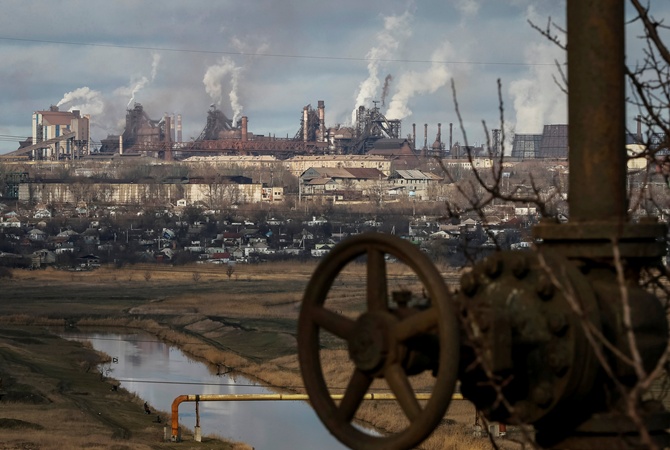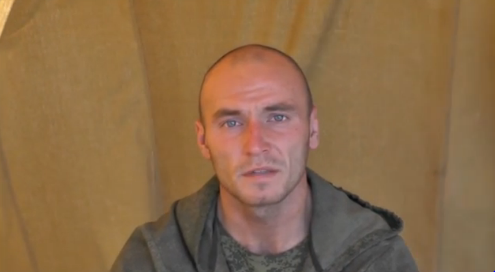Who will be summoned during the third stage of partial mobilization? LIGABusinessInform correspondents asked the military commissariat workers and NSDC speaker.
Today the Verkhovna Rada passed the law “regarding partial mobilization,” which affirms the according order of the President. The country awaits the new stage of military mobilization. The first and second stages took place in spring of 2014 – according to the orders of acting interim President on March 17th and May 6th. The majority of the soldiers of the Armed Forces and National Guard have been in the ATO zone for several months, therefore rotation is necessary. Besides, it is important to increase security of the border, import fresh forces to territorial defense troops, reinforce military units and wartime provision units in the east of the country. These are the abridged arguments of the President of Ukraine Petro Poroshenko regarding the necessity of the new mobilization stage sounded from the parliamentary tribune by the NSDC secretary Andriy Parubiy.
232 members of the Parliament voted in favor of approving the President’s order with a necessary minimum of 226 votes. The law regarding mobilization is enacted at the moment of its publication in official media. Starting that moment, the Defense Ministry, National Guard and Border Service have 45 days to augment and rotate the organic units with the help of mobilization 3.0.
It is obvious that the support for the President’s mobilization initiative with 232 critical votes testify to the difficult situation in the Parliament. Many members and even entire party factions consider the new mobilization stage inexpedient without declaring martial law in Donbas.
When responding to such arguments, Andriy Parubiy stated that the decision to declare martial law is the NSDC’s prerogative. And while such a decision has not been made, the MP’s might be interested in the issue of martial law, however it should not become an interference for making important defensive decisions. For example, supporting the President’s order regarding mobilization.
Who will be summoned to the army during the current stage of mobilization? LIGABusinessInform correspondents asked military commissariat workers and the NSDC speaker, and also read the President’s order and analyzed what the NSDC secretary stated today in the Parliament.
Third stage of the first wave: those who have not served will not be summoned
The current stage of mobilization is carried out within the framework of the so-called “first wave,” which presumes that the following are summoned to the army: volunteers; reserve officers and sergeants that served in the army or other force structures, who have military specialties that are currently in demand; as well as reserve regular soldiers with wartime experience.
We remind you that there may be four mobilization waves overall. In case of escalation after the first (current) wave of mobilization, further stages may be announced.
The second wave of partial mobilization: reserve officers and sergeants of all military specialties are summoned; the regular reserve army of all military specializations with military experiences; the higher officers of all military specialties. As to reserve officers who have not served in the army that graduated from military departments of civilian universities, according to the speaker of the NSDC information center Andriy Lysenko, “they should not be summoned, as Ukraine has about 20 thousand reserve officers with real military and peacekeeping experience.”
The third wave: 18-year-old soldiers are mobilized, women who may serve (field doctors, nurses, technical specialists); as well as those who have not served but have no “white ticket.”
The fourth (very unlikely – only possible if ardent war has been underway for a long time): full mobilization, all those capable of holding weapons in their hands join the army.
Why additional mobilization was necessary
According to Parubiy, Poroshenko’s order “regarding partial mobilization” on July 21st was a response to Russia’s continuing escalation of the armed conflict in Donbas, in addition, according to NSDC data, the Kremlin is actively working on the scenario of invasion of the Russian regular army under the guise of peacekeepers on Ukrainian territory.
At the moment, there are about 41 thousand Russian soldiers on Ukrainian territory including Crimea. There are 150 tanks, about 1400 units of other armored machinery, 500 units of artillery systems on the way to Donetsk.
Overall, there are 300 units of armored machinery including tanks, reactive GRAD systems and the most modern reactive artillery “Tornado” systems (range of up to 90 km) are distributed over other areas.
When making his statement at the Rada booth, Parubiy said that in the recent weeks the successes of ATO troops forced Putin to change his tactics – now fire against the positions of the Ukrainian forces is opened from Russian territory. The aggressor is using a template: terrorists from the territory of Ukraine shoot in Russia’s direction, and in response, the Russian army land blow on the positions of the Ukrainian troops and make attempts to invade with their mercenaries and saboteurs. “All of this is viewed by the President of Ukraine as military aggression against Ukraine, and in response he initiates the new stage of mobilization,” said Parubiy.
The particularities of the current mobilization stage
According to the NSDC secretary, the third stage of partial mobilization will allow to additionally prepare 15 military units and augment 44 provision units, as well as regroup the organic units where it is most necessary. The exact number of reserve officers that are subject to mobilization was not named neither by Parubiy nor noted in the President’s order.
In general, a military unit is a troop or brigade (1 thousand and 3,5 thousand soldiers respectively). If we account for these data, then we might be talking about mobilizing tens of thousands of reserve soldiers within 45 days. In response to LIGABusinessInform correspondent’s question regarding the number of those mobilized, the speaker of the information centre of the NSDC Andriy Lysenko said: “The number will be determined by each military establishment. This is classified information. Each institution will make their calculations and hand them over to military commissariats. And people will be summoned according to these calculations.”
It is still unclear what military specialties are most in demand, which will be accounted for when summoning reserve officers to serve during the current mobilization stage. NSDC secretary Andriy Parubiy said very little about this today in the Rada: “If during the first stage of mobilization we augmented military units and mobilized, for the most part, the specialists that have assault specialties – airborne soldiers, grenade launchers, artillery specialists, now the emphasis will be done on augmenting front line provision units. So the units that are not directly engaged in combat, but support the army on the front line. We will also conduct partial rotation of human resources,” said Parubiy.
“I emphasize that during partial mobilization those who have already undergone military service are summoned to serve – reserve officers and people with military experience. And only those that have specialties that individual units need. We do not summon 18-year-old boys. Also we will not summon breadwinners from low-income families,” added the NSDC secretary.
The head of the Rada committee in national security issues and defense Volodymyr Lytvyn, when explaining to the journalists the particularities of the third stage, said that there are about 1 million people in the country that are subject to the first wave of mobilization, plus volunteers. “Of this million, several tens of thousands receive summons. The number of those mobilized will be determined in each individual sphere, in each military unit,” said Lytvyn.
Reserve age increase
Within the framework of the current mobilization stage, the MP’s today increased the age limit of those who are obliged to serve in reserve. According to the amendment made, the age limit for regular soldiers, sergeants and starshyna is increased from 50 to 60 years of age, junior and senior officers – from 55 to 65 years.
As MP, General of the Army, Oleksandr Kuzmuk explained when presenting the document, the increase of service age is necessary to support the third mobilization stage for provision units. In particular, due to the demand for doctors, rear soldiers, electricity specialists, renovation workers, mechanics, drivers.
The obligations of those who receive summons: the letter of law
According to the law “regarding mobilization preparation and mobilization” those who are obliged to serve and who received the summons from the military commissariat, have to arrive at the point at the time noted in the summons. Those who have been summoned retain their jobs, their titles and the average salary at the business or organization regardless of the form of property.
All those who are accounted for in military registries, starting the moment of declaration of full mobilization (we remind you that now partial mobilization is underway), are prohibited from changing their place of residence without the approval of a military commissariat official.
No-shows during full or partial mobilization are to face administrative responsibility in the form of a fine between 85 and 119 UAH, for violating legislation regarding mobilization a fine of 17-51 UAH is presumed, for the intentional destruction of the military certificate – a fine of 17-51 UAH. For avoiding military service during mobilization, article 336 of the Ukrainian Criminal Code prescribes a jail sentence of between two and five years.
Informing servicemen listed for training is done exclusively through summons that have an established template, personally, and not by phone. The summons has to note the time of arrival at the military commissariat.
Who will never be summoned
During mobilization, those who are not subject to mobilization are those who have been booked by the state government bodies during the mobilization period; those who have been deemed unacceptable for military service due to health reasons on a period of up to 6 months; men who have five and more children under the age of 16; women who have children of up to 16 years of age; those who are engaged in providing for someone who has nobody else to turn to. Members of the Ukrainian Parliament cannot be mobilized either.
Source: liga.net
Translated by Mariya Shcherbinina








